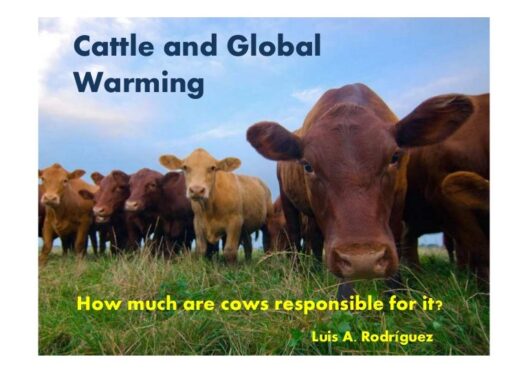Global warming represents one of the most pressing challenges of our time, with its detrimental effects on ecosystems, weather patterns, and human health becoming more apparent each day. At the heart of this crisis lies the alarming increase in carbon emissions, primarily stemming from the burning of fossil fuels, deforestation, and industrial processes. Addressing carbon emissions is pivotal not only in mitigating global warming, but also in fostering a cleaner, healthier atmosphere. This discourse elaborates on the fractional yet impactful role of reducing carbon emissions and outlines the multifaceted benefits of embracing sustainable practices.
To comprehend the gravity of the issue, one must first understand the greenhouse effect. The Earth’s atmosphere comprises various gases, among which carbon dioxide (CO2) plays a significant role. While CO2 is naturally occurring and essential for life, human activities have dramatically augmented its concentration, which in turn contributes to the greenhouse effect. This phenomenon traps heat within the atmosphere, leading to the escalation of global temperatures. The repercussions are numerous—ranging from melting ice caps to rising sea levels, which threaten coastal communities and biodiversity alike.
Reducing carbon emissions is paramount for numerous reasons. Foremost among them is the potential to curtail temperature rise. The Intergovernmental Panel on Climate Change (IPCC) warns that to avert catastrophic climate impacts, global warming must be limited to 1.5 degrees Celsius above pre-industrial levels. According to research, every fraction of a degree matters, with lower temperatures correlating with decreased severity and frequency of extreme weather events. These reductions are achievable through the implementation of renewable energy sources, energy efficiency measures, and afforestation initiatives.
Conversely, a reduction in carbon emissions translates directly into improved air quality. Pollutants from fossil fuel combustion, such as particulate matter and sulfur dioxide, impair respiratory health and exacerbate conditions like asthma and bronchitis. Transitioning to cleaner energy sources not only diminishes carbon footprints but also minimizes the release of harmful air pollutants. Cleaner air is linked to improved public health outcomes, fewer medical expenses, and increased productivity, thereby fostering economic vigor. The nexus between environmental stewardship and human health is increasingly evident, demonstrating that investments in sustainable practices yield both environmental and economic dividends.
Another salient point of discussion is the role of carbon emissions in exacerbating climate injustice. Vulnerable populations—particularly in developing nations—tend to suffer the brunt of climate change impacts despite contributing minimally to carbon emissions. By reducing emissions, wealthier, industrialized nations can help mitigate the conditions affecting these disadvantaged communities, thereby addressing the socio-economic inequalities perpetuated by climate change. Strategies that prioritize social equity alongside emissions reduction, such as just transition frameworks, ensure that the benefits of clean energy shifts permeate all levels of society.
Technological advancements pave the way for innovative solutions to combat carbon emissions. The electrification of transportation, capture and storage technologies, and the promotion of circular economies are but a few examples of how science and ingenuity can come together to forge a sustainable future. Enhanced energy efficiency, through the adoption of smart grids and improved insulation in buildings, can significantly lower energy consumption, thereby reducing the emissions associated with energy production. As the momentum for sustainability builds, so too does the collective impetus for research and development aimed at novel carbon reduction strategies.
Furthermore, the psychological dimension of environmental consciousness cannot be overlooked. Engaging with the critical narrative of climate change can galvanize communities into action. Individuals empowered with knowledge are more likely to take proactive measures in their daily lives—whether through adopting public transportation, minimizing waste, or supporting legislation aimed at environmental conservation. Grassroots campaigns have the potential to ripple outward, creating a culture of sustainability and environmental responsibility that transcends individual actions. Inspiration can stem from localized efforts, ultimately contributing to wider legislative changes and corporate accountability.
Strategically, governments and institutions play an essential role in steering the course toward reduced carbon emissions. Policy frameworks that incentivize renewables, impose carbon pricing, and enforce stringent emissions regulations act as catalysts for transformation. Furthermore, international agreements such as the Paris Accord provide a collaborative platform for nations to strategize and share best practices in combating climate change. Global commitment, coupled with localized accountability, can create an environment in which emissions reduction is not only feasible but imperative.
The impending threat of climate change necessitates a collective conscience—an understanding that every action, no matter how small, contributes to the overarching goal of a sustainable future. Community initiatives, from tree planting to renewable energy cooperatives, underscore the harmonization of local and global efforts. In an era where information travels instantaneously, fostering networks and sharing success stories can inspire collective action and innovation. Ultimately, the argument for reducing carbon emissions extends far beyond environmental conservation; it is inextricably linked to health, equity, technological advancement, and community resilience.
In conclusion, the imperative to reduce carbon emissions emerges as a clarion call for action in the face of an ecological crisis that affects us all. With warmer temperatures come dire consequences that undermine biodiversity and human livelihoods. However, with resolute determination and a collaborative spirit, a cleaner, healthier planet is within reach. Transitioning toward sustainable energy sources, enhancing air quality, addressing injustice, leveraging technology, and galvanizing community action are not merely options—they are our collective responsibility. The time for change is not a distant goal; it is an immediate necessity.







